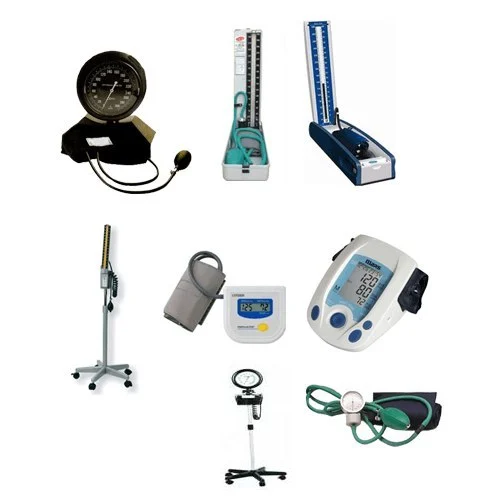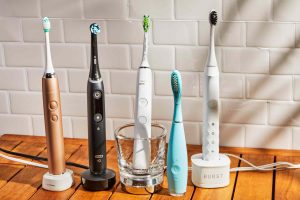Blood Pressure Monitors: What Are They For? How They Work, Applications, and Safe Usage Tips

Blood pressure monitors are essential medical devices used to measure the force of blood against the walls of arteries. This measurement is crucial in detecting potential health issues like hypertension (high blood pressure) or hypotension (low blood pressure). In this article, we will explore the purpose of blood pressure monitors, how they operate, their practical applications, and the safety guidelines you should follow when using them.
1. What Are Blood Pressure Monitors For? (Introduction, Common Types, and Benefits)
A blood pressure monitor is a device used to measure an individual’s blood pressure, which is crucial for maintaining cardiovascular health. Monitoring blood pressure regularly can help detect early signs of health problems like heart disease, stroke, and kidney issues.
Common Types of Blood Pressure Monitors:
- Manual Blood Pressure Monitors (Auscultatory Method): These are traditional devices that include a stethoscope, a cuff, and a pressure gauge. They require a trained individual, such as a doctor or nurse, to accurately measure blood pressure.
- Digital Blood Pressure Monitors (Automatic): These are the most common at-home devices. They automatically inflate the cuff, measure blood pressure, and display the results on a digital screen, making them easy to use for personal monitoring.
- Wrist Blood Pressure Monitors: These devices are compact and designed to measure blood pressure at the wrist rather than the upper arm. While convenient, they may be less accurate than arm monitors.
- Ambulatory Blood Pressure Monitors (ABPM): These are portable devices used for 24-hour monitoring, often prescribed by healthcare professionals to track blood pressure throughout the day and night.
Benefits of Blood Pressure Monitors:
- Early Detection of Hypertension: Regular monitoring helps detect high blood pressure before it leads to serious complications such as heart attacks or strokes.
- Convenience: With digital blood pressure monitors, individuals can easily check their blood pressure at home without the need for a healthcare provider.
- Tracking Progress: People managing hypertension or other cardiovascular conditions can track their blood pressure readings over time, helping healthcare professionals adjust treatments if necessary.
2. How Do Blood Pressure Monitors Work? (Principle of Operation and Key Components)
Blood pressure monitors work by measuring the pressure exerted by the blood against the walls of the arteries as the heart pumps blood. The measurement is taken using two key parameters: systolic pressure (the pressure when the heart beats) and diastolic pressure (the pressure when the heart is at rest between beats).
Key Components:
- Cuff: The cuff is wrapped around the upper arm or wrist and inflated to temporarily stop blood flow. The monitor gradually releases air from the cuff, allowing blood to flow again while measuring the pressure.
- Pressure Sensor: In digital models, a pressure sensor detects the vibrations or changes in blood flow when the cuff deflates, and this information is used to determine the systolic and diastolic readings.
- Stethoscope (Manual Monitors): In manual models, a stethoscope is used to listen for Korotkoff sounds, which correspond to changes in blood flow during the deflation of the cuff.
- Digital Display: Digital monitors show the blood pressure readings on an LCD screen, typically showing the systolic pressure first, followed by the diastolic pressure.
- Battery/Power Source: Most digital models operate on batteries or require a power adapter, ensuring they are portable and convenient for home use.
The cuff inflates to a point where it temporarily stops blood flow, and as it deflates, the pressure at which blood starts to flow again (systolic pressure) is recorded. The monitor continues to deflate until the blood flow stabilizes, at which point the diastolic pressure is measured. This process takes just a few minutes in automatic devices.
3. Where Are Blood Pressure Monitors Used? (Practical Applications)
Blood pressure monitors have a wide range of practical uses, both in medical settings and for personal health monitoring.
Home Use:
- Personal Health Monitoring: Regular blood pressure checks are vital for individuals with high blood pressure, heart disease, or those at risk for these conditions. Having a personal monitor allows individuals to track their progress and make adjustments to their lifestyle or treatment as needed.
Medical Use:
- Routine Check-ups: Healthcare professionals use blood pressure monitors to assess the health of their patients during regular check-ups. Monitoring blood pressure helps in diagnosing conditions like hypertension or hypotension.
- Prevention and Treatment of Hypertension: Doctors often recommend home monitoring for individuals diagnosed with high blood pressure. This allows for more accurate tracking outside the clinic and ensures appropriate adjustments to medications or lifestyle changes.
Specialized Use:
- Ambulatory Blood Pressure Monitoring: In some cases, healthcare providers may recommend 24-hour ambulatory blood pressure monitoring to track blood pressure variations throughout the day and night, which is especially useful in diagnosing “white coat syndrome” (when blood pressure rises in a clinical setting).
- Pregnancy Care: Monitoring blood pressure during pregnancy is crucial for identifying potential complications such as preeclampsia, a condition characterized by high blood pressure that can affect both the mother and baby.
4. How to Use Blood Pressure Monitors Safely (Safety Tips and Important Considerations)
Using a blood pressure monitor is generally simple, but following proper safety guidelines is essential for getting accurate results and ensuring the longevity of the device.
Tips for Safe and Effective Use:
- Proper Cuff Placement: Ensure that the cuff is placed around the upper arm at heart level, as improper placement can affect the readings. Make sure the cuff fits snugly, but not too tight.
- Rest Before Measuring: It’s best to sit quietly for about 5 minutes before taking your blood pressure. Avoid talking, moving, or using caffeine, as this can alter your reading.
- Avoid Measuring Immediately After Exercise: Blood pressure tends to be higher immediately after physical activity. Wait at least 30 minutes before measuring.
- Take Multiple Measurements: For the most accurate reading, take two or three measurements a few minutes apart, especially if you are using the monitor at home.
- Monitor Regularly: If you’re managing a health condition like hypertension, monitor your blood pressure regularly and record your results. This information can be helpful for your healthcare provider.
- Use the Device Properly: Always follow the manufacturer’s instructions for use, including how to calibrate the device, replace batteries, and maintain the cuff.
- Avoid Using on Clothing: The cuff should be applied directly to the skin, not over clothing, to ensure proper measurement.
- Store Properly: After each use, store the monitor in a safe, dry place, away from extreme temperatures or moisture.
By following these guidelines, you can ensure that you’re using your blood pressure monitor correctly and safely, leading to more accurate results and better health management.
Conclusion
Blood pressure monitors are invaluable tools for tracking and managing cardiovascular health. Whether you’re using one at home for personal health monitoring or in a medical setting for diagnosis and treatment, understanding how these devices work and using them safely is essential. Regular monitoring can help detect early signs of hypertension, prevent complications, and improve overall health outcomes. With the right knowledge and care, blood pressure monitors can be a crucial part of maintaining a healthy lifestyle.





